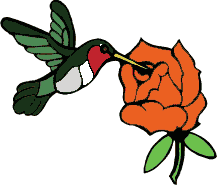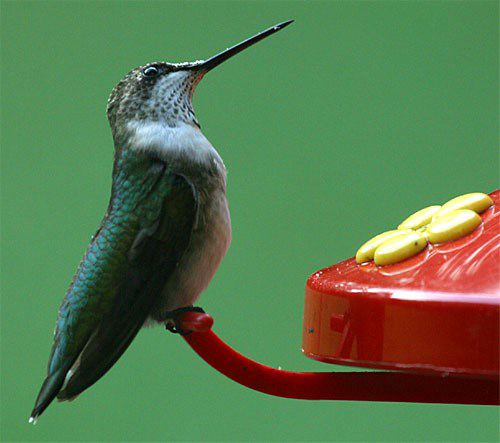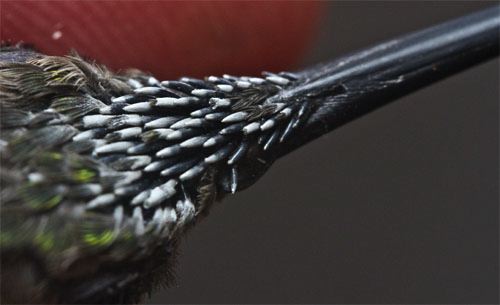|
|
|||
|
(Back to Preceding Week; on to Next Week) |
|
|
|
MIDSUMMER LULL & Historically, we're often away from Hilton Pond Center in July, and 2010 was no exception. In past summers that was when we took our annual family vacation to the South Carolina Coast--hence a dip in our number of banded birds that we referred to as the "Sunny Beaches Effect." This year we were traveling again to such exotic locales as Fayetteville WV to prep for a hummingbird festival and to Cullowhee NC, where we were pleased to speak about hummers at the ever-popular Native Plant Conference at Western Carolina University. It's so nice when the plant people are interested in birds and when ornithologists pay attention to botany!
All charts, text & photos © Hilton Pond Center Although we were in and out for many of the last ten days of the month, we still managed to run traps at Hilton Pond Center on several occasions, catching lots of House Finches, a couple of Northern Cardinals, and a welcome assortment of Ruby-throated Hummingbirds (adult male above). Through mid-July 2010 our local hummingbird banding efforts were pretty much a bust, with no new ruby-throats banded until 10 May and only a total of eight through 11 July--giving us our second slowest start in 26 years of hummer banding. (See red line below; click on the chart to open a larger version in a new browser window.) As indicated by the chart's teal-colored line, last year was our slowest ever start, but it's too soon to say whether we're looking at some sort of trend with two slow seasons in a row. (After all, 2009 ended up as our fourth-best with 205 RTHU.) This year improved beginning 12 July when we caught four new ruby-throats; by the end of the month we finally reached the 50 mark--within 94% of where we "should be," on average, by that time.
All charts, text & photos © Hilton Pond Center Through the years our correspondents frequently have told us in spring and summer they have many fewer Ruby-throated Hummingbirds than usual. We've usually replied that folks should keep their feeders fresh and wait for an expected "glut" of hummers that invariably occurs in late summer or early fall when feeders are frequented by both adults and fledglings (immature male above). This year, however, we had many more complaints than usual--even from places where we knew experienced observers typically had sizable spring populations of ruby-throats. It's hard to know whether this phenomenon is simply a one-time blip or whether something else might be going on. One possible explanation is that there really ARE fewer hummers this year, perhaps because several years of back-to-back-to-back hurricanes that devastated nectar-producing plants and habitat in the Gulf Coast states. Nancy Newfield, the Queen Mother of hummingbird banders who lives in Louisiana and has an up-close vantage point, believes this could be the case. After all, with the loss in Florida, Misissippi, Alabama, and Louisiana of coastal vegetation--specifically Trumpet Creeper--southbound migrant ruby-throats would have no place to feed as they cross the coastal states before departing for migratory flights; likewise, exhausted birds returning the following spring might not have anywhere to replenish depleted energy reserves after the northward trip. It may take a while to determine whether this is an actual cause-and-effect relationship--Nancy believes decimated ruby-throat populations probably take at least 2-3 years to rebound--so stay tuned for further information about this curious situation.
All charts, text & photos © Hilton Pond Center We were surprised two adult ruby-throats caught at Hilton Pond in late July--a male and a female--were in the midst of complete forehead molt (female, above). This is something we don't usually see here in this part of the Carolina Piedmont but that occurs frequently in January and February on our midwinter study site in Guanacaste Province, Costa Rica. (Nancy Newfield tells us it's also common in July at her banding stations in Louisiana.) Of even greater interest at the Center this week were five returning ruby-throats, including one five-year-old female first handled as a new fledgling in early August 2006. She obviously knows her way to and from Hilton Pond because we've caught her every year since!
All charts, text & photos © Hilton Pond Center This summer's least welcome news at Hilton Pond has been oppressive heat, which seems to have had almost as stifling an effect on birds and wildlife as it has on us humans. Daytime highs continue to be in the mid- to upper 90s, with high humidity. Some mornings have been so humid--96% one day--that fog made the pond (above) almost invisible through the window of our office in the old farmhouse. Undoubtedly the midsummer lull will continue for a few weeks at Hilton Pond Center until the heat abates (we hope), autumn bird migration cranks up, and the number of wandering Ruby-throated Hummingbirds increases--we hope to a record-breaking level. All charts, text & photos © Hilton Pond Center
|


 "HUMMINGBIRD MORNINGS"
"HUMMINGBIRD MORNINGS"




